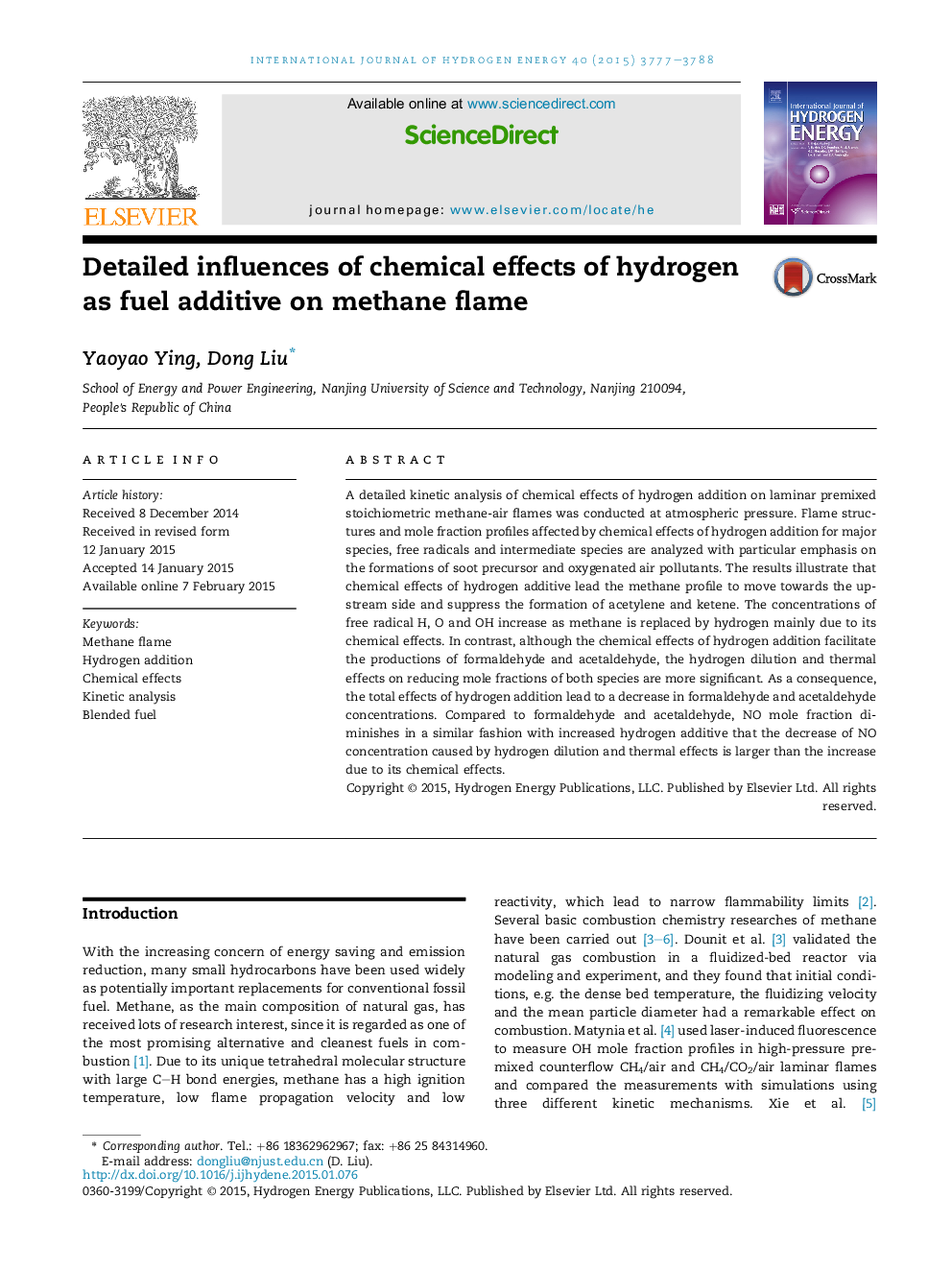| Article ID | Journal | Published Year | Pages | File Type |
|---|---|---|---|---|
| 1269807 | International Journal of Hydrogen Energy | 2015 | 12 Pages |
•Chemical effects of H2 addition on CH4/H2 flames are isolated from other effects.•Chemical effects of H2 addition suppress formations of acetylene and ketene.•H2 dilution and thermal effects reduce CH2O and CH3CHO concentrations.•NO formation is suppressed predominantly by H2 dilution and thermal effects.•H, O and OH concentrations increase due to significant H2 chemical effects.
A detailed kinetic analysis of chemical effects of hydrogen addition on laminar premixed stoichiometric methane-air flames was conducted at atmospheric pressure. Flame structures and mole fraction profiles affected by chemical effects of hydrogen addition for major species, free radicals and intermediate species are analyzed with particular emphasis on the formations of soot precursor and oxygenated air pollutants. The results illustrate that chemical effects of hydrogen additive lead the methane profile to move towards the upstream side and suppress the formation of acetylene and ketene. The concentrations of free radical H, O and OH increase as methane is replaced by hydrogen mainly due to its chemical effects. In contrast, although the chemical effects of hydrogen addition facilitate the productions of formaldehyde and acetaldehyde, the hydrogen dilution and thermal effects on reducing mole fractions of both species are more significant. As a consequence, the total effects of hydrogen addition lead to a decrease in formaldehyde and acetaldehyde concentrations. Compared to formaldehyde and acetaldehyde, NO mole fraction diminishes in a similar fashion with increased hydrogen additive that the decrease of NO concentration caused by hydrogen dilution and thermal effects is larger than the increase due to its chemical effects.
